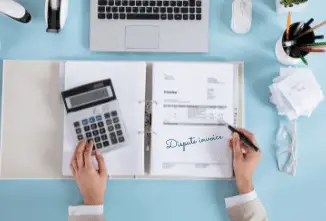You will agree that invoicing is not one of the most glamorous parts of running a business, but it is the most important.
In this guide, we tell you all about invoices. What they are, how they work, and why they are essential for your business.
So what is an invoice? Let’s begin:
What is the definition and meaning of an invoice?
The simplest and most accurate definition of an invoice is that it is a document that a seller gives a buyer to collect on a payment. It usually includes the cost of the goods or services rendered and outlines the mode and date of payment.
An invoice serves as a legal document and must contain specific details required for its validity. These include the names of the client, the terms of payment, a description of the goods or services delivered, and the cost.
An invoice serves as proof of a purchase made between you and your customer as a business entity.
A quick look at the evolution of invoices
Invoices have come a long way. Currently, there are many different ways of writing and sending an invoice that weren’t there before. We have moved from paper invoices to electronic invoices, and even tax-compliant electronic billing signed and unsigned using EDI and PDF invoices.
Here’s a look at the evolution of invoices:
- Stone invoices
As early as 5000 BC, records and invoices were being made in places like Mesopotamia. In this era, the merchants would carve out the details of their transactions using stone and clay tablets and the earliest form of math. [1]
- Hand-written invoices
Later on, the invoices evolved to hand-written notes using parchment paper or animal skin. These contained some elements of the modern-day invoice, such as seals and signatures.
- Electronic invoices
When computers came around, they brought with them the next significant change in the world of invoicing. This was triggered by a desire to reduce the costs and labour of the traditional invoicing system.
So, now invoicing suddenly became faster, cheaper, and more manageable.
- Online invoices
Computers continued to revolutionize the world with the invention of the internet, which led to a more secure, better, and easier way of communicating with clients.
Online invoices are instant and paperless and can be sent by email, and payments can also be made online without too much hustle.
- Mobile invoices
The evolution continued when the world went mobile. Now there are specialised apps and software that companies can use to ensure that invoicing is accurately done and automated, instant, and more secure. You can even invoice on the move.
Why is an invoice important?
Invoices act as requests for payments, and therefore, it goes without saying that you do need them, and they are extremely important. Without an invoice, a customer may refuse to pay, or they may pay the wrong amount.
This can cause delays in payments and frustrations from both sides. Invoices also act as tax documents to help you with compliance to tax rules.
They must be prepared correctly, and mistakes are unacceptable.
Additionally, they are legal documents, and they create a binding agreement between the seller and the buyer. They oblige the buyer to pay the agreed price.
You can use an invoice when taking legal action against a customer that has refused to pay.
For this reason, an invoice must contain a signature, the names of both the customer and seller and other legally binding terms, such as the amount to be paid and the date of payment.
Here are two other reasons why invoices are essential:
What is an invoice used for?
Invoices are used to demand payment. They are legal documents and once issued, the receiver is obligated to honour them.
Here are some other functions of invoices:
What is invoice management and why is it important?
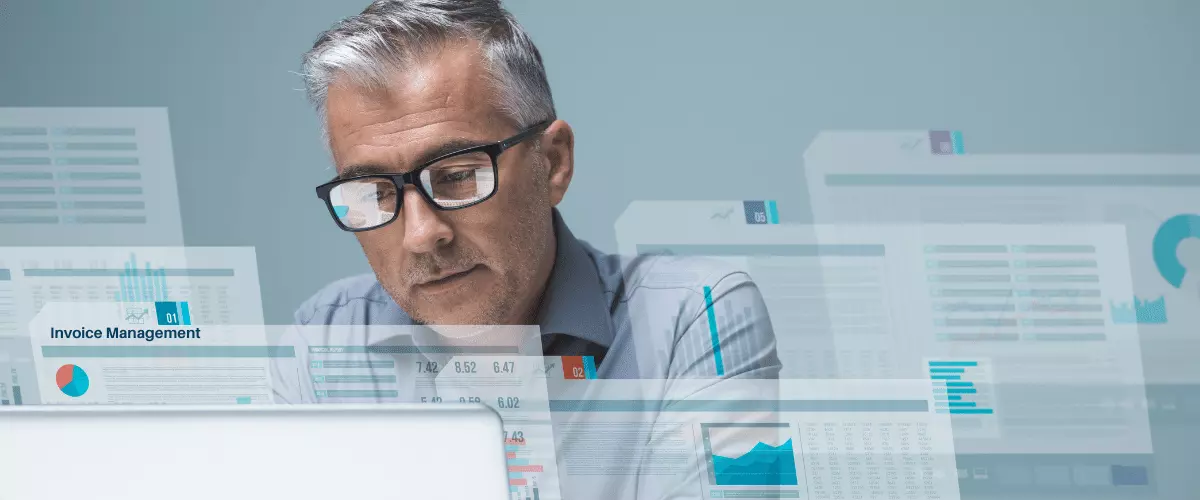
As mentioned earlier, dealing with invoices is no fun, but if you own a small business, you have already realised that it is one of the most important tasks for you. So, it’s wise to learn how to manage invoices.
One of the best and easiest ways is to use an invoice sample and come up with a simple process of generating, sending, and tracking invoices.
A good invoice management system will encourage regular cash flow, save you time and ease your accounting woes.
Invoice management is the whole process of creating, sending, and tracking invoices for products and services sold, and it deals with both accounts payable and accounts receivables.
Of course, invoice management can be done manually, which is an outdated way of doing it.
Still, the best way would be to implement an automated invoice management systems that will help you keep track without doing too much work yourself.
These systems will remind you to send an invoice, remind you to track the invoice, and even tell you how much is due from each client.
This is a fast, cost-effective, and more accurate way of managing your money.
Every business should seek to use it.
What is a valid invoice?
A valid invoice is one that is legible enough to produce a clear scanned image.
It should also contain the following information:
- The department you are billing.
- The invoice number or account number.
- The payment terms.
- The invoice date or tax point.
- The name and address of the receiver.
- The name, address, VAT registration number, and postcode of the supplier.
- A description of the goods or services to be delivered, which must match the PO details, including unit of measurement, quantity, price, and the total value of the invoice.
- Any agreed charges, including discounts, VAT amount, freight charges, the applicable VAT rate, and any other relevant charges pertaining to the contract.
- In case of a credit note, ensure that it is legible, especially if you write it by hand, although a typewritten one is ideal.
Additionally, ensure that your invoice:
- Is not printed on dark paper.
- Does not have staples as they create trouble when scanning.
- Does not contain an ink colour that’s difficult to scan, such as purple.
Who issues an invoice?
The seller issues an invoice to the buyer. It gives a complete list of all the goods and services that the seller has provided to the buyer, with a complete breakdown of the cost, including the due date and payment terms.
Here’s what happens:
- The customer purchases goods or services from you.
- You agree on the contract, which includes payment terms and dates. You could decide to pay after delivery or before delivery.
- You capture the complete details of the sale and the parties involved in the sale on the invoice.
- You send the invoice to the customer.
- The customer makes full payment, as per the agreed terms.
When is an invoice sent?
There really isn’t a single answer to this question because most businesses adopt different practices when sending invoices.
Here are a few options:
How do you send an invoice?
The easiest and fastest way of sending an invoice is through email. You simply attach it using an un-editable PDF doc and include a brief but clear description of the invoice and your business in the body of the email.
Different clients and customers will have different ways of receiving invoices, and it is good to find out whether there is some information they prefer to have included in the subject line to get you paid faster.
After sending the invoice, you could call your customer to check whether they received it and when the payment is due.
This is a polite nudge, so you can remind them that they need to make plans to pay the invoice within the allocated time.
Is an invoice a legal document?
On its own, an invoice is not a legal document, and while invoicing is an important practice in accounting, invoices do not serve as legally binding agreements between businesses. This is because they leave way too much room for manipulation to serve as legal documents.
Additionally, there isn’t enough proof in the invoice itself that both parties have agreed to the terms to help ensure that clients pay on time and in full. For small businesses, it’s advisable to create small contracts that are legally binding agreements.
However, in the UK, Invoices can be legally binding if both parties are registered for VAT.
Unfortunately, not everyone registers for VAT as it requires a business to have an annual turnover of more than £85,000 to be registered.
That being said however, invoices provide the most efficient and easiest way of tracking your finances and ensuring that payments are made on time.
Once an invoice is sent, it provides some specific obligations for the receiver that they must meet. The first obligation is to pay the invoice, and the law is clear on this; it states that all invoices must be paid within 30 days of receiving the goods or services.
Are handwritten invoices legal?
Yes. Invoices have come a long way, and some form of invoicing is still valid. Of course, you cannot expect an invoice written on a stone tablet to be legal anymore, but a handwritten one that contains all of the required information is still legal. [2]
A handwritten contract is also legally binding when both parties sign off and agree to the contract terms. If you use a handwritten invoice, make sure to use a rubber stand containing the address and name of your business for validity.
What should an invoice include (what is legally required?)
If you wish to receive your payment promptly, your invoice must include all of the required information. If you do not do this, then your customer is at liberty to question it, and this will only lead to delays that will cost you money.
Now, depending on the industry you are in and the type of work you do, specific things need to be added to the invoice, but we shall give you the basic checklist of items that must be present on all invoices.
The extras will be added as per your industry.
Here’s what MUST be included:
- Your company name and contacts
The invoice must have your business name, phone number, address, logo, email address, and website. If you are part of a larger company, you should give specific contact details for the customer who should be contacted in case of any queries.
- Your client’s address and name
Do not forget to put your client’s name on the invoice. Yes. This seems almost obvious since you send the invoice to them, but you will be surprised how often people forget.
This is a formal document that can be presented in a court of law, and as such, the client’s name must clearly appear on the invoice.
- The invoice numbers
You should create a reference number to quickly identify the correct invoice in case you have a query. It really isn’t a complicated process, and you could base the invoice numbers on anything that is sequential. We shall discuss invoice numbers later on.
But whichever numbering system you choose to use, just ensure that you make each invoice unique because if you happen to create two with identical numbering, you could end up with too much confusion.
- Invoice date
This is extremely important. The invoicing date establishes the day you sent the invoice, and the payment terms, such as – pay within 30 days, the counting starts from the date on the invoice.
You can also include the date you did or delivered the work on the invoice, but the invoice date is more important in getting paid.
- Due date
The question is, how quickly do you want to be paid? Well, this is what the due date stands for. The most common number of days is 30 days, although it can vary depending on the type of work, the client’s expectations, and your needs.
This must be included on the invoice and make it very clear.
- The total amount due
Let’s just say that this is the most important part of the invoicing process, and it makes sense because the whole reason you write an invoice is to be paid, and hence, you must include the amount you wish to be paid.
This is prominent on the invoice
- Work details and any other charges
So, other than the total amount you are owed, you must also include the exact details of the work you did and the amount you are charging the customer for each component.
Additionally, if there are extra charges, please include them as well, so you can give your customer the complete picture of how much they owe you.
- Tax and delivery cost
Tax details will vary depending on the different parts of the business and the world. Therefore, we cannot tell you the specifics of this, and if you need to charge something like a sales tax, you must include it and your Tax ID number.
Now, if you charge shipping costs, then this shouldn’t be forgotten as well. Ensure to include it in the invoice, so you won’t have to send another invoice to correct the one you sent.
- Payment options
This deals with how you would like to be paid. You must specify this very clearly. Please include this information for the client, so they know what you expect.
For example, you could tell them that you wish to be paid through PayPal, of which you should send your PayPal ID, even if the customer already has it, or you want to be paid through the bank, and in this case, send the bank account details, regardless of whether they have them or not.
Be sure to offer at least one option that is accepted widely. Or you could provide more than one option ensuring that they do not have any excuse for not paying.
- Additional payment terms
This is not a must, but it is a good idea. Include some additional conditions and terms on the invoice, which provides a way of encouraging the customer to pay you early.
For example, you could offer a discount for anyone that pays within ten days of receiving the invoice or 20 days before the due date.
What you need to know about UK invoicing and VAT
We have mentioned tax above, but not in detail. You may be wondering if you need to use a VAT invoice, and you probably don’t. This is because, tax invoices are only used by companies that have registered for VAT.
Registration is compulsory if you expect to have a VAT turnover of more than £85,000 in the next month or if your business had £85,000 in the last year.
How to issue a VAT invoice:
According to the UK Government, a VAT invoice should only be used if you are registered for VAT. [3] The invoices do need more information than regular invoices, and there three main types:
- A full VAT invoice,
- A simplified VAT invoice for supplies under £250, and
- A Modified VAT invoice for retail supplies of more than £250.
The kind of information that should be included depends on the VAT invoice you are issuing your customer. There is a table on the gov.UK website that you can use to let you know the information you need to include on the invoice. [4]
Generally, in addition to the details we have outlined above for all invoices, a VAT invoice should also include:
- Your VAT registration number.
- Your VAT rate and the total VAT charged if all the items are charged using the same rate.
- The tax point, i.e., time of supply, in case it is different as compared to the invoice date.
- If you have different items with different VAT rates (which happens sometimes) then, you should show this information for each item.
What a Sole Trader invoice should include:
If you are a sole trader, then your invoice should have all the above details, inclusive of the following information:
- Your name and the name of the business you are trading under.
- The address where any legal documents will be sent.
Limited Liability Companies
The invoices for LLC should also include:
- The full name of your company as it appears on your Certificate of Incorporation.
- The names of directors, if this is something you have decided to do.
The importance of invoice date
When you are creating an invoice as an entrepreneur or a self-employed person, one of the requirements is that it must be clear, and you should specify things such as dates for it to be considered an official document.
Here are the most important invoice dates:
- The issue date
It is essential to include the invoices’ date of issue. Of course, this is nothing more than the date you send the invoice to the client. When using invoicing software, the date of issue is usually added automatically.
- The delivery date
This may seem a bit ambiguous and sometimes can be confused with the issue date, but tax authorities use the delivery date for both services and goods. It is necessary to know why it is essential.
The date of delivery is when you provided or completed or delivered the goods to the customer. If this is not like the issue date, you must indicate these two on the invoice.
Usually, the description area of the invoice is used for indicating the date of delivery or execution, although, for tax purposes, this hasn’t been specified.
The only specification is that the delivery date must be indicated on the invoice if it differs from the issue date.
So, you are obligated to include both of these dates if they do not coincide.
- The due date
The main reason why a due date MUST be set is so you can encourage your customers to pay the invoice within a specified period. It is, of course, possible to agree on a later date with your customer, but they should always endeavour to stick with 30 days.
There are some unique conditions to any sale with your good customers and possibilities of having more extended payment periods. This, however, doesn’t negate the fact that you should include a due date on the invoice.
Sometimes, setting the due date is not always easy, and there are some key things you need to keep in mind, such as:
- Do not be ambiguous when it’s about payment. It is common to see clients write terms such as “Pay by the first working day,” or “Pay by the end of the month.” The problem with such words is that they are vague and open to all sorts of interpretation.
- Be clear. Say, “Pay 30 days from the date of this invoice.”
- Ensure to state the date in full – This means that you have to put the day, the month, and the year. Putting the month and day only will leave the due date open to some very unwelcome suggestions from the customer.
- Put the date of issue in full – this is equally as important as the due date. It provides a very clear window of payment, but you should also keep in mind that if the issue date of an invoice is on a Friday, a 30-day pay date will fall on a Sunday, which will cause you to give your customer one extra day.
- Beware of clients who only want to pay on fixed dates – you will find this technique with large companies that wish to have an extended payment period. Sometimes it’s unavoidable because these companies have strict payment plans, and they tend to have more weight to throw around the market.
- Plan for the invoice payments that need to be made by the end of December – this is the holiday season, and most companies are wrapping up the fiscal year. This will make it difficult for them to make payments. In this case, you could extend to January.
What is an invoice address?
This refers to the legal address of your business and where you are required to receive any correspondence from your clients.
It may be different from the delivery or shipping address if you have a separate warehouse, and it is always essential to differentiate these addresses. Of course, sometimes it may be the same address, which is great and avoids confusion.
Importance of an invoice number or invoice ID
This refers to a unique and sequential code that is given to invoices. The number is not the most crucial aspect of invoicing, but it ensures that they are adequately documented for accounting and tax purposes.
The numbers also make it easy for payment tracking and management of overdue invoices. Each issued invoice should have this number, and it must always be stated clearly. Without it, the invoice is not considered to be legal.
How to write an invoice for business – from start to finish
Writing an invoice is all about making it appear professional. Think about the bill you receive at a restaurant.
You’ve probably seen all sorts of bills and thought nothing of it, but these are carefully designed to give the customer as much information as possible.
Some restaurants will even go as far as presenting it in a booklet to look professional. As a business owner, you also want class, not basic stuff, so you need to be creative when invoicing your clients.
There isn’t any single specific format when it comes to invoices.
There are, however, some standard layouts, and the most important points to note are:
- You should use a template that looks professional, plus ensure that the look and feel are consistent.
- You must include your business logo, your colour scheme, and your branding.
- Enter all the information clearly and make the important points easy to find and read for your clients.
- Also, include all the key items we mentioned above.
Let’s give an example:
So, invoices consist of three main sections:
- The header
- The body, and,
- The footer
1. The invoice header
Example invoice header:
YOUR LOGO
Business address line one
Business address line two
Town, State, City
Post Code / Zip Code
Invoice to:
Business address line one
Business address line two
Town, State, City
Post Code / Zip Code
INVOICE
Invoice Number: 0000
Invoice Date: 01/01/2021
Invoice Due Date: 01/02/2021
Customer ID: 0000ID
Invoice Terms: Net 30
Total Charge: $5,000
PO Number: 12345
Total Invoice Due: £5,000
1 Start by firing up your favourite software, such as Apple Pages, Microsoft Word, Google Docs, etc. Right at the top, write the word “INVOICE.” This should be in huge font.
This will help because it will clearly show that the document is an invoice, not a letter, receipt, or certificate, mainly when the client receives it.
2 Next is to key in the information. It should be yours as well as the client’s information. E.g.
- The name of your company, address, and registration number.
- Your phone number, email address, etc.
- The name of the client and their address – this one may need an “Attn.” When it’s a particular person or department, include their name.
- The contact details for the client.
It really doesn’t matter whether you put these details to the right or the left.
3 Add the overview and summaries to all of your clients invoices, this should include:
- The invoice number
- The invoice date
- The amount – this should also specify the currency as you want to be very precise.
- The payment due date
That is it for the header. It should look like the sample image we have attached above.
2. The invoice body
The body is the most important part of the invoice, and it is where you will list all the services you have provided to the client, plus how much you are charging for each of the services.
This is mainly done in the form of a table because nobody wants to read a whole book on an invoice.
So, it may have four different columns:
- The description – this part clearly describes, in as few words as possible, the services delivered. You should add a new row for each service.
- Quantity – this specifies the amount of goods or services provided.
- Unit price – it specifies the price for each of the services provided.
- Amount – it should be the total amount you are charging for the goods or services. It is calculated as Quantity X price
A good example would be:
As a freelancer, in case you are working as a photographer and have been given a job to do three shoots within three days, and you charge £1,000 per day, then the invoice would look something like this:
| Description | Quantity | Unit Price (£|$) | Total Amount (£|$) |
|---|---|---|---|
| Full day photography for XYZ company, dates; 26,27,28 | 3 | £ 1,000 | £3,000 |
Below the rows, you should include the final amount for the whole job in the invoice. It means that you will need to add up all the fees for each row and charge your client. Always state the final amount due.
| Description | Quantity | Unit Price (£|$) | Total Amount (£|$) |
|---|---|---|---|
| Full day photography for XYZ company, dates; 26 | 1 | £ 1,000 | £ 1,000 |
| Full day photography for XYZ company, dates; 27 | 1 | £ 1,000 | £ 1,000 |
| Full day photography for XYZ company, dates; 28 | 1 | £ 1,000 | £ 1,000 |
| Total Amount Due: | £ 3,000 |
So, this is where you will also state the terms and conditions of the invoice, such as:
- The mode of payment includes either credit card, bank transfers, cheques, etc.; you should be sure to include all the necessary and relevant info. Such as the bank name and account number, regardless of whether they have paid you before.
- Any fees to be charged for late payment or any discounts – In this case, you should let the client know that you are going to charge them for late payments. Not only that, but you should also include the rate at which you will charge them.
3. The invoice footer
Now, we are almost done with the invoice. Let’s recap. We have included the header, which is the invoice number and date, and we have also included the body, which features a description of the goods and services and the total amount you are charging the client.
Now, the footer is the easiest part of the invoice. Here’s where you add any miscellaneous instructions and notes for the client.
It can be as simple as a short note thanking them for their business, or it could be more information about the contract.
You could also opt to leave the footer blank, which is fine too. Generally, you do not need to sign the invoice before sending it to the client, and you do not have to create the signature box on the invoice footer.
Example of an invoice footer:
Comments:
Payment due in 30 day
Include invoice number with pay
Make all checks payable to:
Bank- payment details:
Bank name: Bank name
Bank account number: 00 00 00 00
Bank sort code: 00-00-00
Thank you for your business. If you have any questions about this invoice, please contact the office on (00) 000 0000 or via email to [email protected]
Invoice payment terms
Now, invoice payment terms are used to indicate the conditions for payment clearly. In the UK, unless stated otherwise, the customer is required to pay an invoice within 30 days after receiving the goods or the invoice.
Some businesses will choose to operate under a different model, which means that they may increase or reduce the standard period.
Most suppliers may also ask for more extended periods, such as 90 days or 120 days.
Additionally, businesses will offer their clients discounts when they pay early or when they pay in advance.
SMEs are also increasingly going a bit further in a bid to protect themselves by asking their clients to settle invoices in around seven or fourteen days.
However, one thing to note is that how quickly your invoice is paid depends partly on how you issue the document.
Manual invoices are slow both on delivery and processing, but the good news is that more modern methods of issuing invoices guarantee fast payments.
Invoice types
There are many different types of invoices, and each invoice is appropriately named according to what it does.
You must accurately select the correct invoice to give your client, remembering that these are legal documents that can be presented when called for in court.
Now, regardless of the type of invoice, the rules are the same, which means that you have to ensure that you include the information required on all invoices.
An invoice is also a tax document that is usually used to show the revenue you have earned in the year.
Invoice template examples – word & excel
An invoice is the last interaction that customers have with your business, and when you have an outstanding invoice, you can enjoy the following benefits:
- A lasting impression on the customer.
- The possibility of the customer referring you to their friends and potential customers.
- The fact that a happy customer is a repeat customer.
- A professional record that can be kept for future reference.
Therefore, it is important to find a suitable template that works for you and makes it easy to include all required information. You could use Word or Excel, and we have a few samples for you below.
Feel free to choose the one that best suits your business, but make sure that:
- It is a print-friendly version.
- It’s fully customizable.
- It includes all the essential elements of an invoice.
- It calculates the subtotal and the total automatically.
- It is professionally formatted.
Standard invoice format template
Again, the format of an invoice should represent professionalism, and this must never be compromised. An invoice should look a specific way and deviating from that will only make you look misinformed.
One major hurdle with using word processing software is in formatting the invoice. This is because arranging the text where you want it to be is not always easy, especially when it comes to the invoice header.
This will mean that you must fiddle with invisible text boxes, text wrappings, and many other tedious settings.
So, instead of going through all of this trouble, use one of our templates below to format your invoice. These are editable templates that will make your invoicing much easier and more detailed.
Some invoicing FAQs
Conclusion
Well, there you have it. The complete invoicing guide has included all the information you may ever need when it comes to invoicing.
Although a simple process, invoicing is one of the most vital parts of the business, as it ensures that you get paid for work done.
Finally, I would like to include a few summary points on invoicing best practice rules that you should always live by:
- Keep the process simple.
Do not complicate things. Cluttered invoicing will cause confusion and accounting problems. It is wise to always go with a clean background design and a simple layout where the company logo and other important details are displayed prominently.
- Make sure to agree on the terms early on.
Before you even finalize the contract, it is wise to inform your clients of all the payment terms and make sure that they agree and understand them.
Once you have run these through your clients, request that they be included in the contract and obtain a signed copy from the client to confirm their agreement to the terms.
- Always be prompt with following up.
Sending an invoice to the client is not where the buck stops. In fact, in some instances, this is where the actual work begins. You should ensure to follow up on payments with constant but polite reminders.
Never be afraid to follow up on an invoice. Send the client an email to check when they plan to pay or remind them of the late payment penalties. Doing this will help them understand the urgency and even give you some commitment on when they expect to pay.
Thank you for reading our guide.
We hope that it will be of help as you invoice your clients.

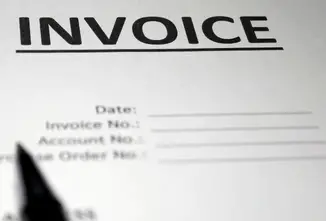
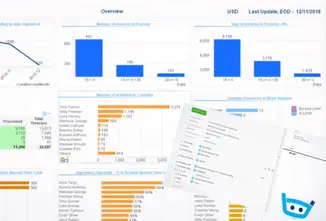
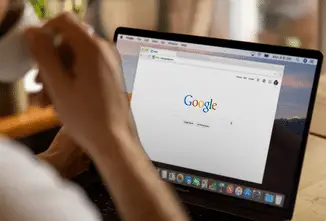
![How to write past due invoice emails that work [+ tips & templates] 6 How to write past due invoice emails that work](https://brodmin.com/wp-content/uploads/2022/04/How-to-write-past-due-invoice-emails-that-work.webp)
![How to invoice international clients [+ 10-point checklist] 7 Invoicing international clients](https://brodmin.com/wp-content/uploads/2021/10/Invoicing-international-clients-0.webp)

